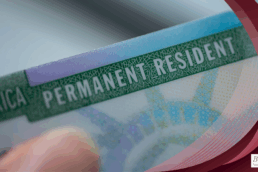Filing your name change in court is not required in most states; changing your name through usage alone will suffice. However, government and financial agencies may require legal name change documents in order to help provide protection against identity theft and credit card fraud.
You may be wondering how then do I legally change my name? Here’s what you need to know: Legal documentation will be required for some forms of identification: your Social Security card, birth certificate card and passports. If you encounter institutions and companies that do not want to honor your name change, it’s a good idea to have a court order as proof.
So, what’s the process for getting a name change on the books? Generally, you will need to fill out a form, which will include simple questions such as your old name, new name, Social Security number, the reason for the name change, and a promise that your intention is not illegal, or an attempt to escape debt or criminal liability (Changing your name will not allow you to do so!)
Other commonly required forms are a petition to legally change your name, an order to show cause for the name change, and a decree to legally change your name. Take the completed forms to your local court clerk, file them and pay your state’s filing fees, and then a judge or magistrate will review the submission and grant the name change. Since laws vary from state to state, it’s important to find out what is required in your state. Go to your state government website to find more information and forms.
Once you have changed your name, usage is the most important thing. You should also change your name on personal documents (including estate planning documents) and notify the following: employers, schools, the post office, Department of Motor Vehicles, Social Security Administration, Department of Records or Vital Statistics, financial institutions, creditors, debtors, utility companies, your state’s taxing authority, insurance agencies, Registrar of Voters, passport office, public assistance office and Veterans Administration.
It is a U.S. citizen’s constitutional right under the 14th Amendment to change his or her name. When applying for naturalization, the applicant has the option of asking to change his or her name when citizenship is granted with no extra fees. What about green card holders? Federal law does allow permanent residents to change their names. For those with permanent resident status who would like to do so, here’s what you’ll need to do. First, follow the legal name change process required by your state.
After this is done, U.S. Citizen and Immigration Services recommends that you replace your green card with one that has your new name. The process begins with filling out USCIS Form I-90: Application to Replace Permanent Resident Card. Supporting documents and a fee will be required. If approved, you will be sent a new green card. If USCIS wants more information, you may need to go to a USCIS office for an interview or provide the original copy of the legal document confirming your name change.
If you are interested in immigrating to the United States and would like more information, please contact our office to speak with one of our attorneys today!
Ready to have Berardi on your side?
Whether you’re a business looking to hire or a professional hoping to relocate, immigration law can be complicated. But you don’t have to do it alone. Put our experience to work for you.


